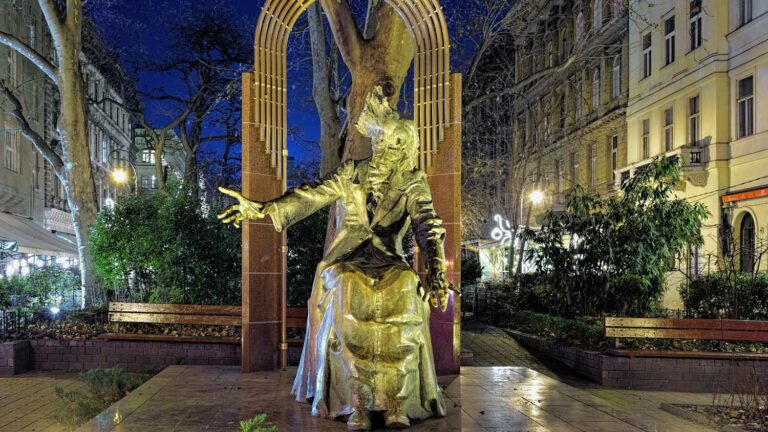Probably the most widely known composer of Hungarian origin is Ferenc or Franz Liszt. His music is respected all over the world and his piano technique became a benchmark for anyone wanting to call themselves “virtuoso”.
Born in Sopron county to a family of musicians, Liszt was first introduced to Piano at the age of seven. His father, Adam Liszt was a keen piano, violin, cello, and guitar player. Adam was at service to prince Esterhazy II and his circle of friends included Haydn and Beethoven. Having great influence on Ferenc himself, he began composing only a year after he was introduced to the piano. After performing in several concerts, a group of wealthy sponsors offered to finance his education in Vienna. His teacher, Carl Czerny was a famous composer of notoriously difficult exercises for piano technique.
A bejegyzés megtekintése az Instagramon
As he grew, he too expanded his circle of friends and similarly to his father he also mingled with legendary composers. One of his early friends and later rivals was Chopin. His career began as a performer.
European tour
He travelled all around Europe and was well-received everywhere from Ireland to Russia. He was compared to another virtuoso, Niccolò Paganini. At this stage, his performing career overshadowed his composing. While touring Europe he didn’t compose much and was therefore not yet truly valued and appreciated by other composers. They did value his performances though. Whilst still a teenager, his father died, and the family had to move to Paris. There Liszt began teaching and took on the role of breadwinner of the family.
A bejegyzés megtekintése az Instagramon
Often, he would start his first lesson at 8 a.m. and finish at 10 p.m., enjoying his commutes around Paris along the way. At this time, he also developed his other passion: religion, reading countless texts. Later, this devotion to faith would dramatically shine through in his works.
The women of his life
It was not until 1833 when the 22-year old Liszt began composing. Why? Well, as it is often with composers, after meeting a beautiful woman. Indeed, after acquainting himself with Comtesse Marie d’Agoult he composed Album d’un voyageur. A year later, he published his first piano compositions. This gave him new energy and Liszt was again conquering Europe, but now as a composer.
Liszt was also a charitable young man. He gave many free concerts to raise funds for humanitarian causes. When news of the great fire of Hamburg reached him, Liszt performed in the city for free.
As is so often the case with composers, his artistic career skyrocketed. while his love life was in much worse shape. The relationship with Comtesse Marie d’Agoult resulted in 3 children but was short-lived. Liszt’s heart now belonged to Princess Carolyne zu Sayn-Wittgenstein who he met in Kyiv in 1847. Having great influence on him(unsurprisingly) he soon stopped his European rendezvous and once again composed and taught music. It seems Princess Carolyne didn’t want to lose Ferenc, so kept him on a short lead.
A bejegyzés megtekintése az Instagramon
The following year, they moved to Weimar. This was the moment from which Liszt truly began to innovate and create new forms. The most famous one of them being a Symphonic poem. In some ways it was similar to Opera, but not quite the same.
A bejegyzés megtekintése az Instagramon
Later years
Liszt’s later years were tragic ones for him. Two of his children died and Johannes Brahms published a manifesto against him. That would spark the famous War of the Romantics, where composers who had once admired each other would hate and denigrate each other’s work. His later work became complex and rather extreme in harmony, while subtle and uneventful in form.
Here are the Top Five Liszt works:
Hungarian Rhapsody No.2
Liebenstraum
Totentanz
Campanella
Piano concerto No.2
By Illya Ovchar




